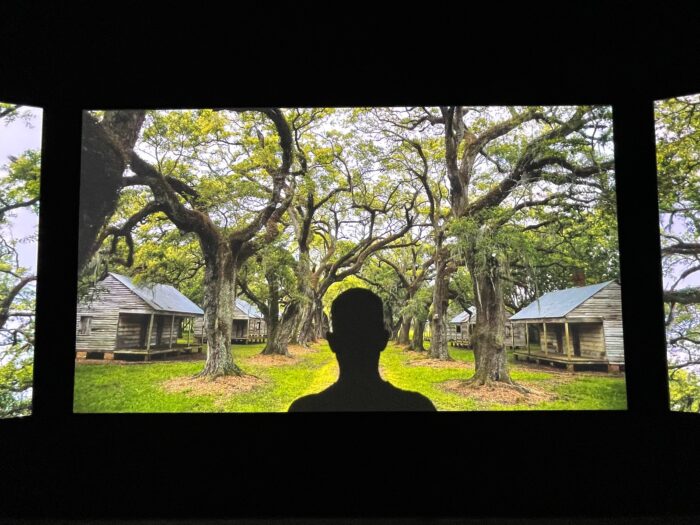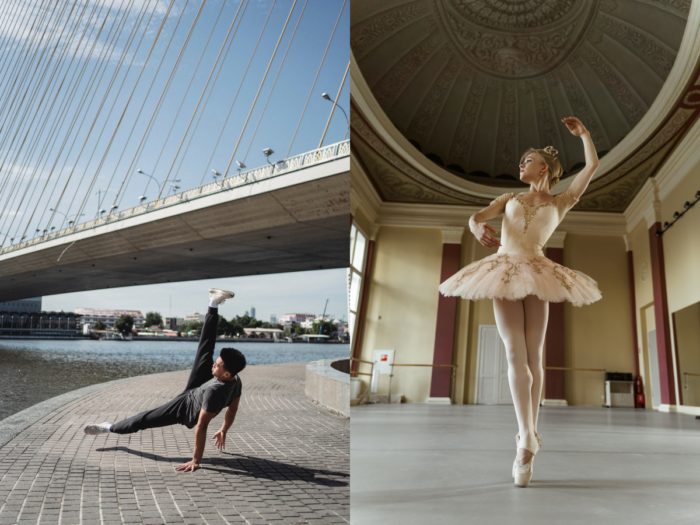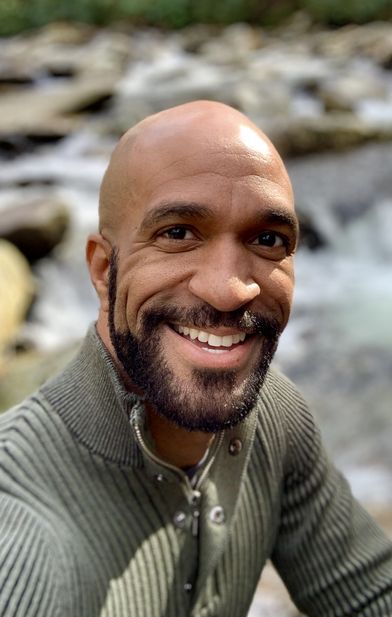I am a very wordy writer. I know this is too long. Everything I write is too long, and then I edit it more. What I like about it is the stream of consciousness, kind of back and forth, bringing things together that we don’t often talk about together, kind of writing. I’m not a grammatically super correct person. Sometimes that is intentional, a lot of times it isn’t. I write the way I think in words. Sometimes I don’t make sense.
Why it is so long: well, I wanted to tie together my experiences and learnings from this really cool project I am currently a part of (which I am in Colorado doing as we speak) because I think it’s really important information and people should know about it. I also think that it sets the reader up for connecting sensory information with social context, and then social practice (art), which is really important to me. Taking sensation away from society, processing it as separate, has value, and it also does a lot of harm because it justifies ways to disconnect and/or control yourself and others. Explaining hypermobility, aesthetic definitions through history, the eugenics, how this is an example of how artistic aesthetics are a eugenic tool in tandem with science – it’s a lot to go through that many people aren’t aware of. I want the dots to be connected – as many as I can while still making sense.
I think the point I am trying to make with it all is that when we take things apart and talk about them as separate, we actually move further away from understanding the system and how we play a role. This is how it works in anatomy and medicine, this is how it works in ableism and elsewhere. If we connect things, people start to fill in the gaps. If we detach them from the context of reality and recent history, it’s easier to maintain power and harder for people who are oppressors to identify their role in maintaining that hierarchy.
— Audre
Recently I was told I am more like age 53 than 28. This happened six months after I forgot how old I was and was too brain foggy to do the math and landed on 27 because I thought I definitely most likely wasn’t 26, but I wasn’t sure if I was 28. I was 28. I am. What year is it? 2023. Are we still in a pandemic? Yes.
I was told I was more like age 53 after explaining part of my life story to an anatomist while we sat on stools, a scalpel and hemostat in both of his hands, doing an exploratory connective tissue cadaver dissection…mapping the peripheral nerves: my rainbow transparent sparkle dream.
Dreaming of the variations of the nervous system – not separate from connective tissues. Actually surrounded, engulfed, made by, made with, made for – it’s incredible. Connective tissue organizes the body from cellular to macro levels. At every size-level or “resolution.” Connective tissue forms sheaths around cells, nerves, vessels, and groups of nerves and vessels, groups of groups, and everything else. It protects. It organizes. It is what most of the body is made up of.
Connective tissue allows for what this anatomist calls “differential movement” in layers of tissue where, because there is so much water in connective tissues, we can imagine them as a complex, layered vat of liquid jello, covering anything that’s dipped, allowing for movement within and between everything. Fluid flows, people breathe, nerves sense, and on and on and on. The nerves of “Captain”– our donor – even re-squish or adhere together after dissection. The tissues aren’t even alive – and they still reconnect. What happens to living connective and nerve tissues?
I dream of the day when we value sensation as real and true and important, equally, if not more important, as top-down cognition. I dream of the day that sensation is recognized as the way our systems regulate and communicate with each other; that what we feel inside and out is the same exact information that tells our heart when to beat, our gut when to squeeze, our lungs when to relax so that the diaphragm domes. Sensation is feedback – for everything in the body. So why do we discredit it?
Hypersensitive, wrong signals, amplified signals, confused, referred, not really there but comes from “stress”
We focus so much on the aspect of cognitive control, modulation, direction, knowing. Control your responses to negative things. Know and understand your body’s problems and pains. You aren’t doing enough. You didn’t do it right. You stopped and weren’t consistent. You. You. You are the reason you exist in this way. As if we are closed systems without the world and each other.
Sometimes we use words like “allow,” “notice,” and “follow” to impart practices of cognitive direction. Direction coming from the top of the brain. Those words don’t change the value system. They only make it harder to observe – make it seem like there is more connection with the universe, or that control is connection. I don’t know what only sensation really feels like – my value systems are always sorting it before I even notice it’s there. I ignore a lot of pain. It’s normal to ignore sensation from chronic tissue damage and stress. Feeling is a lot, and often impractical when you have to pay rent and afford healthcare. Whiteness also ignores sensation. Whiteness is not separate from sensing and feeling.
It’s important to note that nervous systems evolved because moving beings needed to integrate sensory information across groups of cells.
Boom. Incredible. Duality is a fallacy! Feeling is yourself.
Our environment shaped nervous-system evolution. Our bodies shaped nervous-system evolution. There is a difference in what parts of the brain evolved first versus later and then how the embryo develops into the body. But that doesn’t mean one part is “higher order,” or has a more honorable duty or capacity compared to lower parts of the brain, or even the spinal cord, or even, dare I say, the peripheral, and even more dare I say, the cutaneous nerves. I said it.
What if the smallest nerves, the ones we can’t see or image with technology, embedded at the cellular level, send the most impactful signals to our systems? The ones that allow us to feel. Why haven’t we asked that question? Why is feeling bad bad?
The brain is very much a self-organizing system without a manager or directing circuit, it is NOT like a computer. Information is circulated and integrated and signals are sent out. And this loop is happening all the time all at once. It never stops.
We often act as though the brain has a director deciding how to respond, making the organization of signals happen. Coordinating. We assume there is a hierarchy of brain signals, of organization, of thought. Even if we do acknowledge that there is no “director” part of the brain, why is top-down cognitive control so central to our understanding of ourselves? To life? To care?
One thing that we really learned in the cadaver lab, through this exploration, is that “cutaneous” nerves also go to the fascia, the deep fascia, the peri-fascia (around vessels and nerves), and the layers of fat! They don’t just go to the outermost layers of our body: the “cutaneous” layers. They go EVERYWHERE.
These nerves go shallow and they go deep. Deep pain is real. Your identification of sensation in layers of yourself is real. Your fat can hurt and be warm and cold and sense motion. That’s your endocrine system. That’s one of the most important parts of your body. Fat insulates connective and other tissue layers for conduction and communication. Fat is so important. And fat feels.
This discovery discredits much of pain research, which needs to be discredited, because calling disabled people sensitive when there is literal damage occurring at all levels of life is just avoiding accountability. Just because you can’t see something doesn’t mean that the identified sensation isn’t representative of what is going on.
Our focus on sight ignores feeling.
Aesthetics. Ooooh. Such an interesting word. Such an interesting history. Aesthetics. Meaning: relating to perception by the senses. Relating to a verb by a thing? So a process of relation? A “sense” of relationship. Ha!
The sense “concerned with beauty” was adopted into English in the early 19th century after aesthetics meant “science which treats the conditions of sensuous perception.” So, aesthetics, in recent colonial culture, was a practice of eliminating disability before it was considered pertaining to art “for art’s sake.” But the definition didn’t change because society wanted to keep disabled people around. (Can I get a yewww-gen-icks?!).
Eugenics always does this – always tries to treat-meaning-eliminate shit that is supposedly a problem, and then literally create a field of thought and capital that does it without saying it’s doing it so that white people are in control. In this case, people were psychiatrized, or made out to be a problem through psychiatric categorization. A key eugenic strategy…think Eric Adams’ new “ugly laws.”¹
Then aesthetics became “the science of the perception of the beautiful” right around the time eugenics was considered a liberal movement (1850-WWII). You didn’t know eugenics was a liberal movement and connected to all of our current liberal movements and frameworks? Oh yeah. James Baldwin was really fucking serious.² Liberal = eugenic.
The reason we separate the two words is because that’s how power is maintained. If you said liberalism was eugenics on Capitol Hill, no one would believe you. They might think you were…crazy.
The aesthetics of the body. The “science of the perception of the beautiful” of the body. The “science” meaning objective measurement, “of the perception of the beautiful?”
It all results in the same thing – eliminating disability. Eliminating people. Erasing them. If I decide what is and isn’t beautiful and say it’s natural and true then that means it’s not natural and true for ugly things to exist if I determine they are ugly. I’m like the kid in the sandbox throwing toys out of its walls after I break them thinking: they did it to themselves, mimicking an ableist cartoon on TV.
The aesthetics of disability. That’s a tough one for me.
Aesthetics of popular art changed with eugenic strategy implementation and capitalist expansion, especially in the last 150 years. Minimalism. Modernism. Post-modern. And on and on and on. Changes skyrocketed with the industrial revolution because it was cheaper to mass produce simpler designs, among many other very racist reasons. As science, a tool of the state, was establishing what a cisheteronormative man and woman were supposed to be made of, popular artistic and design aesthetics moved away from complexity and detail and color. Simple. Clean. Pure. Essential.
Weird and different – or dare I say innovative? – can only be minimal and/or appropriated. There is an amount allowed to happen. An amount accepted. Any amount over that limit is too much. It doesn’t make sense. You feel something different? You imagine it differently? You must be crazy….
Aesthetics maintain a status quo – they define. They hierarchically organize. This is a funded aesthetic and this is not. Even if you are trying to expand what is accepted in aesthetics, it’s still aesthetics. It still determines what is and isn’t beautiful. How “ugly” can be beautiful.³ What is and isn’t supposed to be. How being is. How identity is. In a world where identity is weaponized and assimilation is often the forced form of survival.
Who is defining aesthetics? Who is being harmed by that definition, and even praised, as an ideal representation, of aesthetics? Someone can be praised and harmed simultaneously.
A really good contradictory example of continual choices around aesthetics of disability in art is the central choice to focus on hypermobility in the body as an aesthetic to attain – to commodify. Hypermobility is sold as health and wellness in every body-based field.
“Healthy” movement is supposed to be mobile all over, not stiff. Smooth, not jerky. Flexible, not tight. Health is doing things other people can’t do. Like downward dog. Or the splits. Or pointing your foot. You have chronic pain and a history of injury? You aren’t conditioning enough (they say).
Hypermobility of the joints indicates widespread connective tissue differences throughout the entire body. These differences are very common and are a cause of impairment in 20% of the population4 and they cause many different kinds of impairments that span across disability categories, pertaining to varied experiences of ableism in society (ex. Chronic illness, mobility impairment/physical disability, Madness/psychological disability, neurodivergence, d/Deaf, blind and low vision, and on and on).
Although the joints are the most immediately visible impacts from hypermobile tissues, it indicates that the entire body is impacted. Every. Single. System. Joints are a visible signal that gets focused on in diagnostics and care. Focusing on sight ignores feeling.
Remember the cadaver dissection? How connective tissues organize and connect everything in the body? Well, when these tissues are more mobile, not only are joints and organ systems and body structures more easily damaged, but so are all of those receptors that sense the world. Because those receptors that send all the signals are exclusively housed in connective tissue. The ones that feel. The ones that tell your body information about when your heart should beat, how a breath expires, how that dance class reactivated your pain patterns. That you are hungry.
Hypermobile movement IS the basis of popular dance aesthetics. Spinning, pushing harder, more limbs, faster, slow and on one leg. Even if you can’t do the splits. Even if you use a wheelchair. Even if you can’t get your leg as high as someone else. Even if you say you don’t think about that or care about that. It is THE basis of funded and accepted dance aesthetics. No one has ever questioned it. Hypermobile people are selected for in performance industries. Joint dislocations apparently are really fun to watch (sarcasm). Until you realize what’s happening. Then it becomes difficult to observe.
As eugenics streamlined design5, medical genetics (called medical eugenics until WWII), was in its heyday. The “founding father” of medical genetics founded the field on hypermobility-associated genes. Hypermobility broke scientific ground. But he couldn’t identify the genes in the most frequently impacted people. So, he decided, their problems weren’t real. They were just weak. Their multi-system problems were “benign.” They were “crazy.” He psychiatrized.
Before hypermobility was called “benign,” it was considered a cause of disability in the medical field. Right when hypermobile problems became medically “benign,” ballet choreography changed to increase the limits of dancer flexibility in movements. And to show that aesthetic change off, tutus got shorter. Those legs!
Dance aesthetics mirrored eugenics. It wasn’t an accident. Hypermobile people were told they were fine because colonialist science is Truth. Care was denied to millions of people. People died6. They still do. And for those that could “exemplify” the scientific interpretation of hypermobility — they were praised and applauded. They were praised and applauded while they were dislocating, inverting, hyperextending their joints on stage.
The thing about these receptors in these connective tissues, is that when a joint dislocates or subluxes (partial dislocation), tissues often go numb for a few hours. So sometimes popping something out or in feels good. It takes the pain away. It increases or decreases friction so much on those receptors that the signals aren’t really sent for a period of time. Maybe it’s because those connective tissues were stretched past their capacity to identify recognizable change.
Hypermobility disables far more people than those who make it to the upper echelons of the dance field, where this publication is currently situated. Yet hypermobility is a commodified visual signifier of health, not disability. Disability was erased in this case. The entertainment industry perpetuated this narrative with aesthetics across sectors, not just ballet. It still does. And the number of hypermobile people with brain fluid leaks who I meet, caused by yoga, dance, massage, alexander technique, feldenkrais, or physical therapy. It’s hard to watch. There’s no medical care for these leaks for hypermobile people. Especially if you are poor.
I observe the entire cycle. I observe how hypermobile ableism is real and so pervasive. It sometimes feels like it is the center of the wellness and arts industries simultaneously. Becoming hypermobile is supposedly “self-care.” But it disables. So when we pretend it doesn’t, we cause disability in some people while we deny the physical experiences of those who are more disabled by it. Who can’t “overcome,” “strengthen,” “get better.”
A disability so common and commodified, it’s erased – ”for art’s sake.”
Disability as aesthetic, or aesthetics of disability, must be questioned. This is a funding priority defining what is accepted sensory representations of disabled art and what is not. Who is allowed to be seen as disabled. Who has power to define. Us at the top define. Myself included.
Our work supposedly represents a population – a population that can’t often leave their home or bed. Who are so without resources that they aren’t around in public. Who make up 40% of the population. And how many disabled artists are funded yearly? Is that number 40% of the funding priorities? Nah.
At the same time, I recognize that claiming disabled identity as an aesthetic is radical in itself because aesthetics is a weapon of eugenics and white supremacy. It destabilizes power. Calling attention to disability is radical and shakes up people’s worlds because disability is constantly being erased in many, many ways. Including saying it isn’t real, or ignoring the pieces that are more challenging to understand.
Reclaiming disability as aesthetic perpetuates harm AND it can push entire industries. In an acceptable way, at an acceptable amount – but not surpassing that boundary. It can all be happening at the same time. It often does. It’s always complicated. You can’t take it apart.
Who is allowed to exist in that identity and be in front of an audience and who isn’t? Who isn’t in the room? Who do you not know? Who is out there? Why are we focusing here? What’s here? What’s in front of me? How am I perceiving it? Does it make me feel good? Why is aesthetic important if it has driven hundreds of years of oppression in art? What happens when you literally get rid of aesthetics? Well, you can’t. It’s everywhere. But what happens when you absolutely let it go? Let aesthetics go. Prioritize something else. Think about something else. Art for aesthetics? Really? That’s no fun7.










